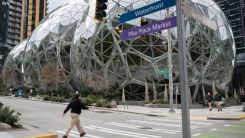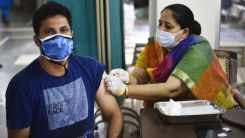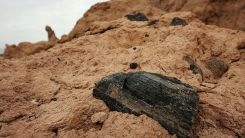
Mark Bustos

The Janus Particle: How These Two-Faced ‘Nanoswimmers’ Could Improve Drug Delivery, Waste Recovery

Universal Coronavirus Vaccines Possible, But Could Take Years or Even Decades
World's Largest Radio Telescope: SKA Observatory Will Soon Start Construction
Robot-Assisted Surgeries Not Feasible, Humans Still Safer and More Reliable
Photos of Pots and Toasters Help Train New Machine to Track COVID-19
Glaring Conservation Challenges: Elephant Herd Travels More Than 300 Miles, Baffles Scientists

Want Your Kids to Eat More Vegetables? Here's How
Healthy Genetics, Less Mutations: The Importance of Keeping Males in a Population Highlighted in New Study
Pentagon Addresses Difficulties in Confirming 'Unidentified Aerial Phenomena' Encounters Citing 144 Incidents

LEGO Succeeds in Creating Recycled PET Plastic Bricks, But Will Take "Some Time" Before Hitting Shelves
Endangered Fungus Tea-Tree Fingers Slowly Losing Grip on Its Last Australian Habitat
NASA on Hubble Space Telescope Restoration: Possible Read/Write Problem but Equipment "In Good Health"

AI Systems Could Soon Predict the Failure of Electronic Devices; How Is It Possible?
Pseudo-Hallucinations? Take This Simple Test and See If You Generate Mental Images Better Than Others
Taking the High Ground: Ancient Roman Camp Used to Reach Northwest Iberia Found
Climate Change Threatens Yellowstone National Park, Less Snow and Warmer Days Expected

Engineered Nanobodies Offer Hope in the Long Run Against COVID-19 and its Variants

9,000-Year-Old Stone Tool Found in Lake Huron; Marks The Oldest Obsidian Discovered in the East US
Inkjet Printing of ‘Impossible Materials’ That Is Invisible to the Human Eye Now Possible With New Technology
Archaeological Clues Spark Experiments on Stone Age Cave Lighting from Torches to Sticks
Silver Iodate Finds New Use in Decomposing CO2 With Visible Light
A New Model Better Captures the Forces Behind A Tsunami
A Unique You: What Your Parents Add to Your Genes Aside from DNA
Algorithm Can Predict Behavior of Unknown Molecules to Speed Up Discovery of New Medicine
Neanderthal Genomes of Father, Daughter and 12 Other Relatives Reveal Diverse Family Groups
Young Neolithic Artisans: 5,000-Year-Old Pots With Three Fingerprints Crafted by Two Young Males
China Claims "There is no Leak" in Taishan Nuclear Power Plant
Liquid Metal Can Now Be Controlled Between Reflective and Scattering States
Nanoparticles Could Help Alleviate a Rare Respiratory Disorder Among Newborns
Most Popular

3I/ATLAS: The Truth Behind the Mysterious Interstellar Object Now Targeted by NASA and UN Teams

Hellfire Missile Video Reveals MQ-9 Reapers Being Used for Aerial Combat

Nvidia's Jetson Thor Could Make Humanoids Smarter Than Ever

Cyber Attack on Jaguar and Land Rover Cripples UK Operations: 1 October Earliest Restart as Deliveries Disrupted Worldwide




